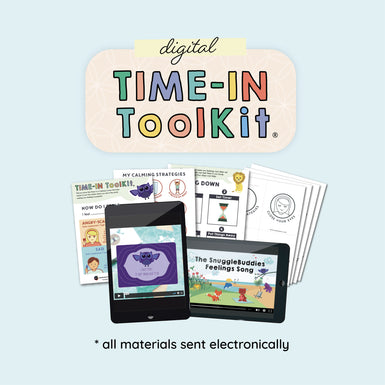What if I told you that the key to fewer meltdowns in your home was not to suppress them but to let them happen?
Any parent could probably tell ya that big emotions and challenging behaviors are daily (sometimes hourly, or, if you’re like our home, minute-by-minute) occurrences. So it makes good sense that we have some tools to know what to do when our children fall apart.
Why Children Struggle To Calm Down
Emotions are pretty new and alarming to our children who are still pretty new to this being alive thing. They struggle to control impulses, even when they know that certain behaviors are not desirable. They lack the foresight to see ahead to consequences and also the memory capacity to remember a “lesson” you taught five minutes ago.
As such, drowning in our frustration and overwhelm, we often work to make it all make sense. Because even more stressful than a flailing child is that feeling we get when we are at a loss as to why our children are behaving the way they are. We look to close the gap and fill in the missing puzzle pieces. We create narratives that our children are defiant, manipulative, and dramatic.
But what if our children were inherently good? If we came in with that mindsight then we’d begin to see that who our children are and what they do are two different things.
Our children are just being children. They are doing their job … making mistakes, learning about themselves and the world, and feeling their feelings. This isn’t a plot to “get us” like the Boogie Man but rather their road to development.
4 Ways To Get Your Child To Calm Down
Now that we know the role of our children, what’s ours? Well, we come in with our sage wisdom, being a guide by the side that they can trust, both in their moments of regulation but also during dysregulation… especially during dysregulation. So, next time your child is exploding like an emotional volcano, give these four tips a go.
SnuggleBuddies® Help Big Emotions & Meltdowns
1. Move to a smaller space.
It doesn’t feel good to feel out of control, especially in front of a crowd. Help your child transition from a large room to a smaller one, from a room with an audience to a quieter space. In removing extra stimulation and influences, your child’s nervous system can shift more quickly.
It may sound something like this: “I see this feels hard. I am going to help you to your room where we can sit together. You are safe and I love you.”
2. Validate and empathize with your child.
This is one of our biggest roles as parents. Validating our child’s experiences meets one of the most vital needs for connection, which ultimately leads to regulation. Our children want to know that their feelings, thoughts, and intuition matter, and to take it one step further, they want to know that their experience is real. They want to know that when they are struggling, they won’t be left alone with their overwhelm, which would feel pretty scary (and thus further a meltdown). Sometimes just feeling seen, heard, and understood is the balm our children desire.
This may sound like: “Something doesn’t feel good inside of your body. I believe you, and I am here.”
3. Respect your child’s boundaries.
Many times, we are so consumed with what we think we should do or the right script or on giving our children what we didn't receive when we were young that we move further out of our relationship with our kids. Despite our best intentions, we are attempting to control the situation or outcome and control is the contrast to connection. Either way, we can end up inadvertently railroading our child’s boundaries. If your child desires closeness, offer it. If your child is asking for space, honor it.
This may sound like: “You are telling me to go away. I hear you. I will sit outside your closed door. I trust your body to know when it is ready. I am here any way you need me.”
4. Wait it out.
Whether you’re right next to your child or on the other side of the door, give your child the emotional space to feel what they are feeling to the full extent that they are feeling it. This means we aren’t fixing it or rushing them along to the next pleasant emotion. This means that we manage our own discomfort so that we can hold space for theirs. In order to fully process the limbic (emotional) tension in their bodies, they must be allowed to express it. Sometimes that takes two minutes, sometimes ten. Keep holding space without the agenda of gettin’ on to the next thing.
As you begin to notice your child shift into a more regulated state, you may choose to touch on the pain point and finish the processing right then by taking a Time-In to discuss what happened, how they felt, and tools for next time, or maybe your child feels ready to move on.
Remember, when it comes to your child, you are the expert. Trust your own intuition to guide you in each meltdown moment. Ask yourself, What do I need right now? What does my child need right now? Use your context clues to give you the answers, because the answers live within you.






















